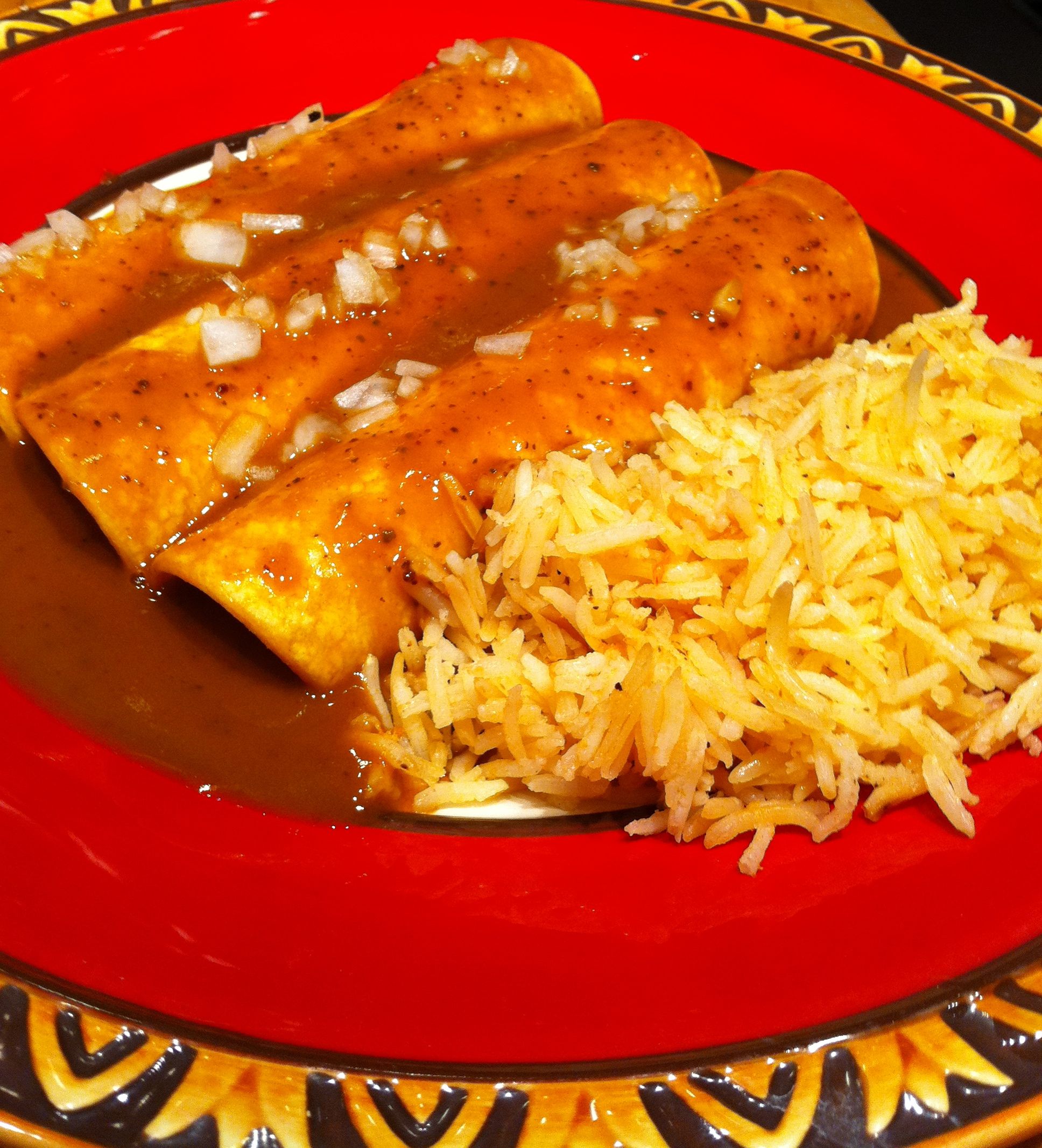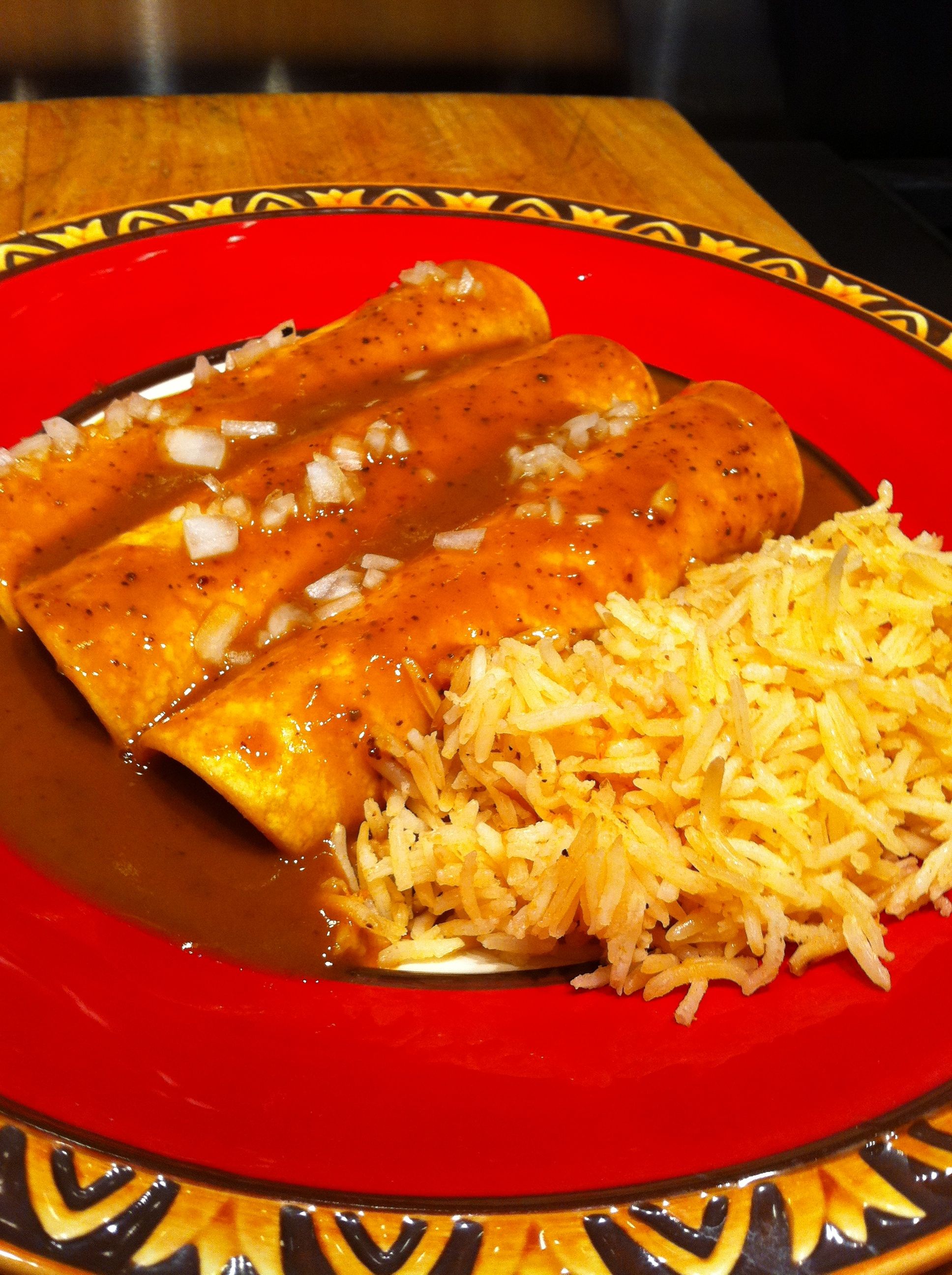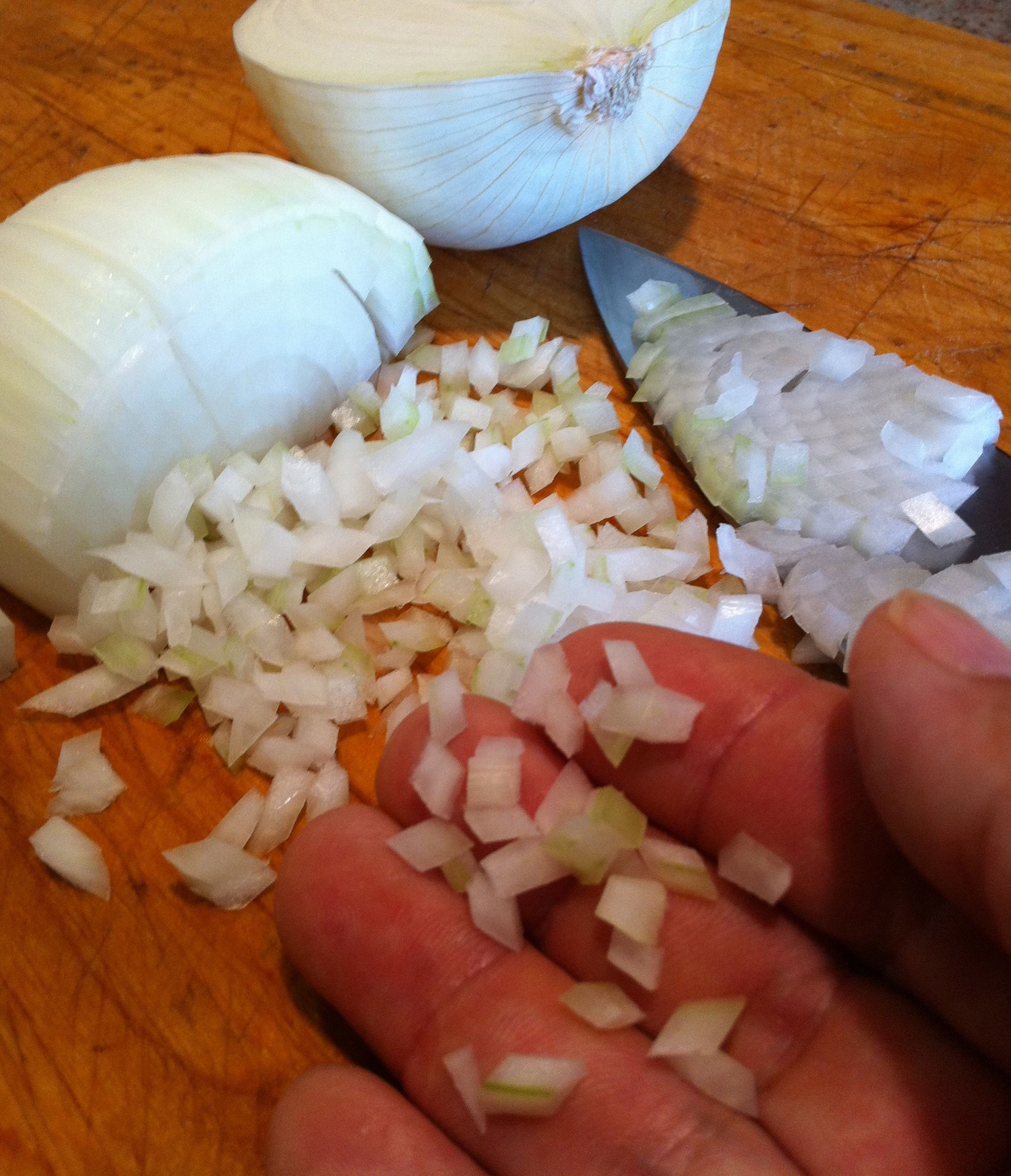Do you Understand my Enchilada?

Enchiladas marked special occasions in our home. To understand them is to understand our community.

I’m glad to share this recipe because its history makes it quintessentially Texas Mexican. I say this for two reasons.
1. It grounds us in our region. The discriminating blending of different types of chiles links us to the other communities in our geographic region who also combined chiles in different variations to make different dishes. Think Guanajuato, Puebla, Oaxaca, etc.
2. It integrates Texas Indian with European ingredients. Actually its success as a fine dining culinary dish results exactly from the successful integration of native with foreign ingredients: a beautiful culinary marriage. In this case, chiles with flour; and Mexican oregano with cumin. The same happened in Oaxaca with mole using wheat bread as a thickener for chiles. Thankfully, today more scholars like my friend, Dr. Mario Montano, are documenting histories of people and cultures who live along the Rio Grande river and these will give us a more accurate history of the origins and evolution of such ingredient combinations.
OK, I call these Enchiladas a fine-dining dish because we savor them with sensory pleasure but also with intellectual enjoyment. This will become clear (I hope) in the recipe.
Recipe: (serves 6) –updated 9/7/11
4 Ancho chiles (on a HOT/SPICY scale of 1 to 10, this is an 8. If you want milder, use only 2 Ancho chiles and 1/2 pasilla)
1 Pasilla chile
1/4 tsp cumin
2 garlic cloves
1/8 tsp black peppercorns
1/4 tsp salt
2″ sprig of Mexican oregano (This is actually Texas Mexican oregano because it is cultivated in Texas around San Antonio, Austin, then also a little farther west, and then all the way south to the Mexican states of Coahuila and Nuevo Leon. It is very different from the common European oregano. More aromatic, with a brighter flavor. You can grow it easily in your back yard as a perrenial. ….but I digress)
1/4 cup all purpose wheat flour
3 Tbs Canola oil
8 cups water
18 corn tortillas
1 white onion
2 cups shredded or crumbled cheese (We used queso fresco but over time processed yellow cheese has gained favor. The industrial revolution spawned Kraft’s processed Velveeta cheese in 1928. Processed yellow cheeses entered the Texas Mexican kitchen and changed the flavors. Be that as it may, just make sure that the cheese you use has a mild, unobtrusive flavor and has the least possible fat. Remember it is the chiles that play the “Prima Donna” role in this dish, which is why it’s called Enchiladas.)
 Method:
Method:
1. Wipe clean and remove the seeds and veins from the chiles.
2. In a molcajete make a paste of the chiles, cumin, garlic cloves peppercorns and oregano. Alternately you can use a blender and one cup of the water to make a very fine purée. Just make sure there are no chunks nor granules. This chile-spice combination is the focal point. It is what you want to taste first and throughout. All the other elements of the dish play supporting and contrasting roles.
3. Finely dice the onion. The picture shows how small the dice are. My sister, Nieves Ortega, reminded me yesterday about how important this fine dice is. Onions, for some reason, are a naturally delicious combination with chile. You want your mouth to easily taste chile-onion as a principal…”yum!” .
4. In a saucepan or large skillet, heat the flour and oil over medium heat for two minutes, stirring.
5. Use the water to dissolve and remove all the paste from the molcajete and add this to the saucepan, whisking all the while to dissolve lumps. Of course if you have used a blender, add the purée and the rest of the water.
6. Bring to a boil, then simmer rapidly, for about 25 minutes until the flavors are blended and all the flour taste is gone. The chile will thicken and reduce. You should have about 3 cups. Taste and adjust the salt
7. While keeping the chile hot over medium heat, use tongs or a spatula to place a corn tortilla in the hot chile for about 8-12 seconds until it is heated through and soft but holding its structure. If too long, it’ll fall apart. If too short a time it will not soften properly. You’ll get the feel of it.
8. Place the tortilla flat on a warm platter and add 2 Tbsp cheese and 1/2 Tbsp diced onions
9. Roll them and arrange seam down on six warm plates. Repeat with all the tortillas, three per plate.
10. Spoon about 1/3 cup of the very hot (temperature) chile in each plate and garnish with additional diced onions.
Taste these with enjoyment, knowing that each ingredient is there for a reason: to make your mouth feel complex, deep pleasure. The chile carries the dish. Let your mind notice the differences in mouthfeel and textures. To understand the layers of flavors, the aromas – individually and also together. Isn’t it great to enjoy food and understand the link to its people!
¡Buen Provecho!

Growing up we made enchiladas with a little packet of spices and a couple of cans of tomato paste, I think. 😀 I didn’t mind, and it was always much more delicious than the slightly hard and chewy school cafeteria enchiladas I got on Wednesdays if I had to buy my lunch. (Who decided that Wednesday was official “Mexican” food day at school?)
I have seen some people here in Houston dip the tortilla in oil, and then put sauce on top. Dipping the tortilla in the oil might help the tortilla stay together a little bit better? (Corn tortillas seem to be very thin here, thinner than at home. I am still looking for the Houston molino of my San Antonio dreams.) In either case, I’m glad to see you dip the tortillas in the chile, and not in a pan of oil. Even if my sauce came from a packet, at least we got the dipping part right. 😉